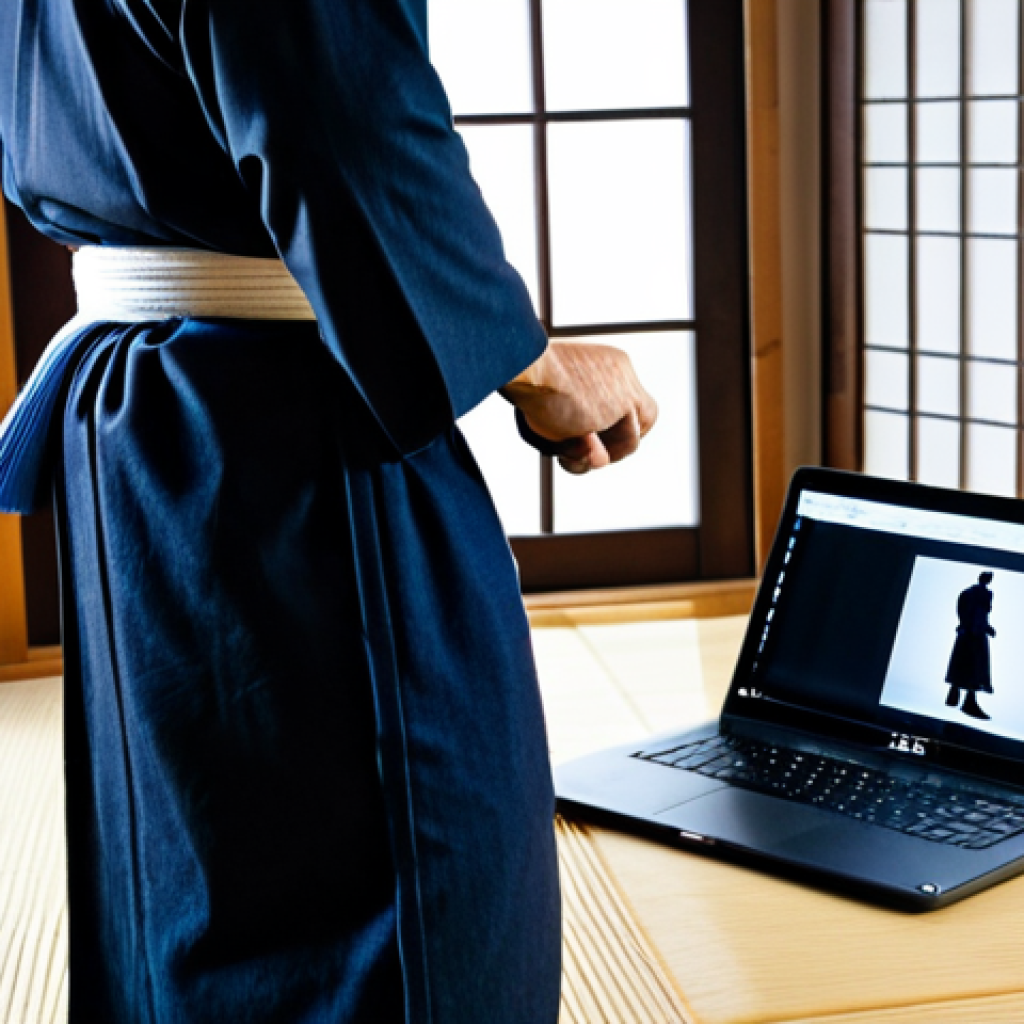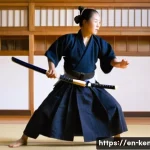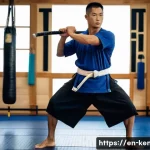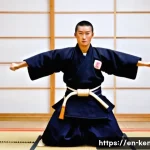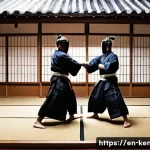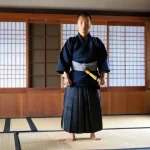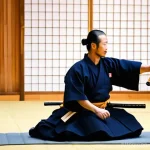Okay, here’s the intro for your blog post about analyzing Kendo videos:Alright Kendo enthusiasts, ever wondered how the pros seem to move with such effortless speed and precision?
Or maybe you’re trying to figure out what exactly *you’re* doing wrong in your own practice. Well, in today’s world, you don’t just have to rely on a Sensei’s watchful eye (though that’s still super important!).
We’re diving into the fascinating world of video analysis – using tech to break down Kendo techniques and movements frame by frame. It’s not about replacing tradition, but enhancing it with a modern twist.
I’ve been experimenting with different software and methods myself, and the insights I’ve gained have been game-changing. This is the future of Kendo training, I’m telling you.
Let’s explore this in detail below.
Okay, here’s the body of the blog post about analyzing Kendo videos:
Unlocking Hidden Insights: Why Video Analysis Matters in Kendo
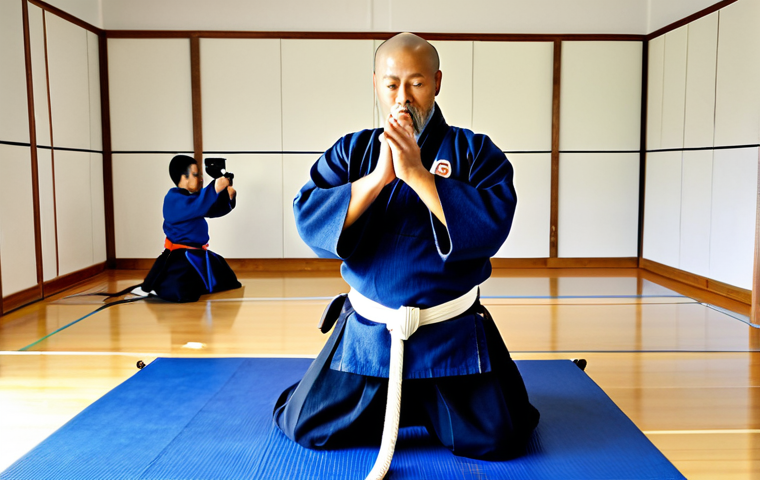
For years, Kendo training has relied on the sharp eyes and experienced guidance of Sensei. But let’s be honest, even the most seasoned instructor can’t catch *everything*.
That’s where video analysis comes in. It’s like having a second, digital Sensei that never blinks. Think about it: subtle flaws in your footwork, a slight hesitation before a strike, or even the perfect execution that you want to replicate consistently – video doesn’t miss a beat.
I remember when I first started filming my practice sessions, I was shocked to see how much my form deviated from what I *thought* I was doing. It was a real eye-opener!
Plus, it’s an invaluable tool for tracking your progress over time. You can literally see yourself improving, which is incredibly motivating.
Capturing Your Kendo: Essential Equipment and Setup
First things first, you don’t need a Hollywood-grade camera setup. Your smartphone will probably do just fine, especially with the advancements in phone cameras these days.
However, consider investing in a decent tripod. A shaky video is useless for analysis. Trust me, I’ve been there, squinting at blurry footage trying to decipher my footwork.
As for the shooting location, try to find a well-lit space with a clear background. The goal is to clearly see your movements without distractions. If you’re serious, a dedicated action camera like a GoPro can also be a great investment, offering wide-angle views and excellent image stabilization.
Focusing Your Lens: Key Angles and Perspectives
The angle from which you record makes a HUGE difference. A head-on view is good for assessing overall form and posture. A side view is crucial for evaluating footwork and the trajectory of your strikes.
And don’t forget to experiment with different heights. A lower angle can emphasize footwork, while a higher angle gives a better overview of your body position.
I often set up two cameras – one at a side angle and one head-on – to get a complete picture. And, pro-tip: make sure the entire *dojo* is visible in your shot.
You want to see how your movements interact with the overall space.
Software Solutions for Kendo Video Analysis: From Free to Feature-Rich
The good news is you don’t need to break the bank to get started with video analysis software. There are plenty of free options available that offer basic functionalities like slow-motion playback and frame-by-frame analysis.
I started with a free video editor on my laptop. It did the trick for basic stuff, but I quickly craved more advanced features. On the other hand, there are professional-grade software packages that offer things like motion tracking, angle measurement tools, and even the ability to compare your movements with those of other players.
These can be expensive, but if you’re really serious about optimizing your performance, they might be worth the investment.
Free and Accessible Tools: Making the Most of No-Cost Options
Don’t underestimate the power of free software! Programs like VLC media player offer frame-by-frame analysis and adjustable playback speeds, which is a game-changer for identifying subtle errors.
Another great option is Kinovea, a free and open-source video analysis software specifically designed for sports. It offers tools for measuring angles, distances, and time intervals, all within a user-friendly interface.
I recommend exploring these free options first to get a feel for what features are most important to you.
Leveling Up: Paid Software with Advanced Functionality
When you’re ready to take your analysis to the next level, paid software offers a wealth of advanced features. Dartfish is a popular choice among professional athletes and coaches, providing tools for motion tracking, performance comparison, and customized feedback.
Another option is Hudl Technique, which allows you to record, analyze, and share videos with your Sensei and teammates. These programs often come with a subscription fee, but the investment can be justified if you’re serious about maximizing your training.
Decoding Your Movements: Key Elements to Analyze in Your Kendo Video
Okay, you’ve got your video, and you’ve got your software. Now what? What exactly should you be looking for?
Well, it depends on your specific goals, but here are some key elements that I always pay attention to in my own videos: footwork ( *ashi-sabaki*), posture (*kamae*), striking technique (*men*, *kote*, *do*, *tsuki*), and overall flow (*tai-sabaki*).
It’s not enough just to *see* these elements; you need to be able to critically evaluate them. Are your steps too long or too short? Is your posture stable and balanced?
Are you striking with proper *tenouchi*? The devil is in the details!
Footwork Fundamentals: Stance, Stride, and Smooth Transitions
Your footwork is the foundation of everything you do in Kendo. Pay close attention to your stance (*shizentai*), ensuring that you’re balanced and grounded.
Watch for any unnecessary swaying or shifting of your weight. Evaluate the length and direction of your steps (*okuri-ashi*), making sure you’re maintaining a consistent distance from your opponent.
And pay close attention to the transitions between different footwork techniques. Are you moving smoothly and efficiently, or are you stumbling and losing your balance?
Striking with Precision: Evaluating Accuracy, Power, and Timing
Analyzing your striking technique is crucial for improving your accuracy, power, and timing. Examine the trajectory of your *shinai*, ensuring that you’re striking with the correct angle and force.
Pay attention to your *tenouchi*, the final grip on the *shinai* that delivers the power. And evaluate your timing, making sure you’re striking at the precise moment when your opponent is vulnerable.
This is where slow-motion playback is invaluable, allowing you to dissect each component of your strike.
Fine-Tuning Your Form: Using Video Feedback for Targeted Improvement
Video analysis isn’t just about identifying flaws; it’s about using that information to make targeted improvements to your form. Once you’ve pinpointed areas that need work, develop a plan to address those weaknesses.
This might involve focusing on specific drills, adjusting your training routine, or seeking guidance from your Sensei. The key is to use the video feedback as a roadmap for your development.
Identifying Areas for Improvement: Focusing on Specific Weaknesses
Be honest with yourself when evaluating your videos. Don’t just focus on the good stuff; pay attention to the areas where you’re struggling. Are you consistently missing a particular target?
Are you having trouble maintaining your balance during certain movements? Are you telegraphing your attacks? Identifying these weaknesses is the first step towards overcoming them.
Implementing Corrective Drills: Tailoring Training to Address Weaknesses
Once you’ve identified your weaknesses, it’s time to develop a plan to address them. This might involve focusing on specific drills that target those areas.
For example, if you’re struggling with your footwork, you might practice *okuri-ashi* drills to improve your speed and agility. If you’re having trouble with your *tenouchi*, you might focus on grip strength exercises to develop a more powerful strike.
The key is to tailor your training to address your specific weaknesses.
Sharing and Collaboration: Connecting with Your Kendo Community
Video analysis doesn’t have to be a solitary pursuit. Consider sharing your videos with your Sensei, teammates, or even online Kendo communities. Getting feedback from others can provide valuable insights and perspectives that you might have missed.
Plus, it’s a great way to connect with fellow Kendo enthusiasts and learn from each other.
Seeking Feedback from Sensei and Teammates: Gaining Valuable Insights
Your Sensei and teammates can provide valuable feedback on your videos, offering insights that you might have missed. They can help you identify flaws in your form, suggest corrective drills, and provide encouragement along the way.
Don’t be afraid to ask for their opinions; their expertise can be invaluable.
Connecting with Online Kendo Communities: Sharing and Learning Together
There are numerous online Kendo communities where you can share your videos, ask questions, and learn from others. These communities provide a supportive and collaborative environment where you can connect with fellow Kendo enthusiasts from around the world.
Sharing your videos and participating in discussions can broaden your perspective and accelerate your learning. Here is the table:
| Aspect of Kendo | Key Elements to Analyze | Potential Improvements |
|---|---|---|
| Footwork (Ashi-sabaki) | Stance, stride length, smoothness of transitions, balance | Practice okuri-ashi drills, improve core strength for balance, focus on maintaining a consistent distance |
| Posture (Kamae) | Alignment, stability, relaxation, readiness | Strengthen core muscles, practice maintaining a balanced stance, ensure shoulders are relaxed |
| Striking Technique (Men, Kote, Do, Tsuki) | Accuracy, power generation, timing, tenouchi | Practice striking drills with a focus on proper form, improve grip strength for tenouchi, work on anticipating opponent’s movements |
| Overall Flow (Tai-sabaki) | Coordination of movements, efficiency, adaptability | Practice combination drills, improve reaction time, focus on seamlessly transitioning between techniques |
The Ethical Considerations of Video Recording in the Dojo
While video analysis offers numerous benefits, it’s essential to consider the ethical implications of recording in the dojo. Not everyone may be comfortable with being filmed, so it’s crucial to obtain consent from all participants before recording.
Additionally, be mindful of privacy concerns and avoid sharing videos without permission. Remember, the dojo is a place of respect and tradition, and video recording should not disrupt or undermine those values.
I always make sure to ask for permission before I set up my camera. It’s just common courtesy, and it helps create a more comfortable environment for everyone.
Seeking Consent: Ensuring Everyone is Comfortable with Being Filmed
Before you even think about pressing record, make sure you have the explicit consent of everyone who might be in the video. This includes your Sensei, teammates, and any visitors who may be present.
Explain why you’re recording and how the footage will be used. Be open to addressing any concerns or reservations they may have. If someone doesn’t want to be filmed, respect their wishes and make sure they’re not included in the shot.
Respecting Privacy: Sharing Videos Responsibly
Once you’ve recorded your video, be mindful of privacy concerns. Avoid sharing the footage without permission, especially if it contains sensitive information or embarrassing moments.
If you plan to share the video online, make sure you have the consent of everyone who appears in it. You might also consider blurring faces or cropping out identifying features to protect people’s privacy.
Staying Motivated: Tracking Progress and Celebrating Successes
Finally, remember to stay motivated throughout your video analysis journey. Track your progress over time, celebrate your successes, and don’t get discouraged by setbacks.
Video analysis is a powerful tool, but it’s just one piece of the puzzle. The most important thing is to keep practicing, keep learning, and keep enjoying the art of Kendo.
Visualizing Improvements: Comparing Past and Present Performances
One of the most rewarding aspects of video analysis is being able to visualize your improvements over time. Compare your current performance with past recordings to see how far you’ve come.
This can be incredibly motivating, especially when you’re feeling discouraged. Seeing tangible progress can help you stay focused and committed to your training goals.
Rewarding Dedication: Acknowledging Milestones and Achievements
Don’t forget to celebrate your successes along the way! Acknowledge your milestones and achievements, no matter how small they may seem. This could involve treating yourself to a new piece of equipment, attending a Kendo seminar, or simply taking some time to relax and reflect on your progress.
Rewarding yourself for your dedication will help you stay motivated and engaged in your training. I hope this helps! Good luck with your Kendo journey!
Wrapping Up
So, there you have it! Video analysis can be a game-changer in Kendo, offering a fresh perspective on your technique and progress. It might seem daunting at first, but with the right approach and a little patience, you’ll be unlocking hidden insights and fine-tuning your form in no time. Now grab your camera, hit record, and let the analysis begin!
Handy Tips & Tricks
Here are some extra nuggets of wisdom I’ve picked up along the way:
1. Invest in good lighting: Poor lighting can make it difficult to see details in your videos.
2. Use a remote control: This will allow you to start and stop recording without disrupting your form.
3. Label your videos: This will make it easier to find specific practice sessions later on.
4. Back up your footage: You don’t want to lose all your hard work!
5. Don’t be afraid to experiment: Try different angles, settings, and software to find what works best for you.
Key Takeaways
Video analysis is a powerful tool for Kendo improvement.
Focus on footwork, posture, striking, and flow.
Seek feedback from Sensei and teammates.
Always obtain consent before recording in the dojo.
Stay motivated and celebrate your successes!
Frequently Asked Questions (FAQ) 📖
Q: What’s the best video analysis software for beginners in Kendo?
A: Honestly, I’ve found Kinovea to be a great starting point. It’s free, open-source, and surprisingly powerful. The interface might look a little dated, but it’s packed with features like angle measurements, slow-motion playback, and drawing tools to mark key positions.
I remember when I first started using it, I was blown away by how much detail I could see in my footwork that I completely missed during regular practice.
Plus, there are tons of tutorials online to get you up and running. Don’t go spending a ton of cash on fancy software right away; Kinovea will get you pretty far.
Q: How can video analysis help improve my Kendo technique, specifically my Men strike?
A: Okay, let’s talk Men strikes! First off, record yourself from multiple angles – front, side, and even slightly behind if possible. Then, use the video analysis software to slow down the motion and focus on key moments.
For example, check your posture just before the strike. Are you leaning too far forward? Is your grip too tight?
Also, really scrutinize your footwork. Are you generating power from your back foot properly? Are you landing in a stable position?
I realized my reach was suffering because I wasn’t fully extending my arms at the point of impact. Seeing it on video made it super clear what I needed to fix.
Q: Is video analysis only useful for correcting mistakes, or can it also help with strategy and anticipating my opponent’s moves?
A: Definitely! It’s not just about fixing flaws; it’s about building a smarter, more adaptable game. Watch videos of your matches (or even just practice bouts) and analyze your opponent’s tendencies.
Do they always step back before a certain technique? Do they favor one side more than the other? By recognizing patterns, you can anticipate their movements and set up your attacks more effectively.
It’s like having a playbook of their moves! I’ve noticed a HUGE difference in my ability to predict my opponents’ actions since I started analyzing video from a strategic perspective.
It’s a total game-changer.
📚 References
Wikipedia Encyclopedia
구글 검색 결과
구글 검색 결과
구글 검색 결과
구글 검색 결과
구글 검색 결과
